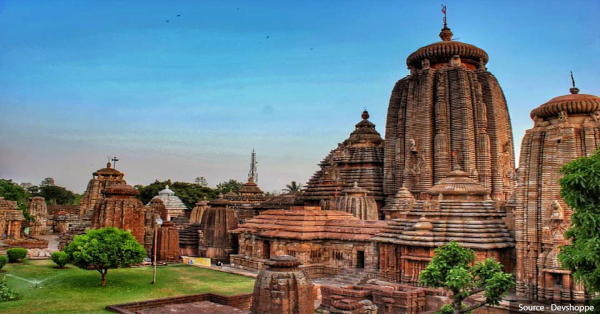WORKERS AND officials of the Archaeological Survey of India (ASI) engaged in a preservation and excavation exercise near Shree Lingaraj Temple, the most prominent temple of Bhubaneswar, have stumbled upon an ancient stone structure — possibly a platform on which one among the oldest shrines in Odisha once stood.
The structure could be older than the 11th century Shree Lingaraj Temple, ASI’s top official in Odisha Arun Malik told The Sunday Express.
He said the structure was found while the ASI was carrying out scientific cleaning of a piece of land near the Suka and Sari temple complex, close to the Shree Lingaraj Temple.
The discovery of the structure has created a buzz of excitement in the state, with Union Petroleum Minister Dharmendra Pradhan, who hails from Odisha, writing to Culture Minister Prahlad Singh Patel on Saturday to seek his intervention in the preservation of heritage. Pradhan also sought a visit by a team of experts from Delhi to study the structure.
“The structure must be a contemporary of the Shree Lingaraj Temple, if not older,” said Malik, the ASI Odisha circle superintendent.
“The ASI looks after 28 temples in the Ekamra Kshetra [Old Town area of Bhubaneswar that has several temples] and it is our responsibility to protect the ancient heritage,” he said while explaining the sequence of events that led to the discovery of the structure.
He said the Odisha government undertook a beautification project in the area around the Shree Lingaraj Temple in 2019. This was to essentially clear up the congestion and encroachment in the area. “But the demolitions were carried out in a manner that was not conducive for a heritage site,” said Malik.
After several interventions and meetings, the ASI began cleaning up the rubble to look for damaged structures that may have been of historical value. That was when the ancient structure, which is believed to be from the Somavamshi period, was discovered.
On the importance of the structure, Malik said the Suka and Sari temple complex may have been built on the Panchayatana model, in which four smaller temples surround the main temple. “Since three of the temples have been discovered now, we will look for the fourth temple,” he said. “It will be a challenge because of all the demolitions that have been carried out in the area.”
Pradhan, in his letter to Patel, said, “Suka-Sari temple complex and Lord Lingaraj Temple in Bhubaneswar are protected by the ASI under the Ancient Monuments and Archeological Sites and Remains Act. There is an urgent need to act quickly in order to salvage and preserve what remains of this priceless ancient Odishan architecture.”
“The ASI also discovered two other structures, believed to be the remains of small shrines, and a portion of the Sari temple. These findings have led ASI experts to believe that the Sari temple complex was built on the Panchayatana model where the main temple is surrounded by four subsidiary shrines. This means that there is a high chance of additional heritage structure lying buried under encroachments in the Ekamra Kshetra,’’ he wrote.
Source: The Indian Express
You may also like
-
India Can’t Afford to Remain Stagnant at this Juncture, Says PM Modi; Asks People to Buy Locally-Made Goods
-
Stolen Artefacts to be Returned to India from Scotland Museums
-
Netaji’s Hologram Statue at India Gate
-
10th Century Stone Idol of Goat Head Yogini IllegallyRemoved from A Temple in Lokhari, Banda, UP Being Returned to India
-
UNESCO Inscribes ‘Durga Puja in Kolkata’ on the Representative List of Intangible Cultural Heritage of Humanity
